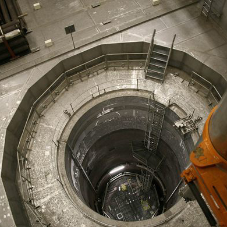Urban Renewal (UR) by definition, tries to redevelop areas within larger cities, including the clearance of slums. It is publicly funded, meaning part of the taxes we pay will be put into a specific UR pot for the government to use accordingly. Forms of UR have been around for decades, some dating back as far as the 1850s, clearing and rejuvenating run-down areas of large cities like London and providing better buildings and cleaner streets. Although UR started with good intentions, the phrase is now met with negativity due to the results of certain projects; people have been left without homes, jobs, and a loss of culture.

The aim of Urban Renewal as the definition describes, is to improve or remove decaying areas. Districts under UR will normally experience an improvement in housing by renovating or replenishing homes as well as creating new ones. UR hopes to benefit the economy, for example, creating more space for businesses like shops, restaurants and offices and therefore increasing employment rates and property value. If the area becomes more desirable, it has the potential to bring in more people so more money. During this time safety is naturally improved through better surveillance and more secure buildings, consequently decreasing crime rates. So, surely Urban Renewal is a good thing, right?
The fact is all the above are not guaranteed. This is what Urban Renewal aims to do, but unfortunately, this isn’t always the case. What can happen during the process of UR is a loss of heritage. Many areas lose iconic or historic buildings and are left with generic looking towns which affects community morale. In order to pay for UR projects, tax must be used and sometimes raised, so this means that people living in the area may be paying for changes they don’t want to see happen. As previously mentioned UR can affect property value, consequently, bringing up the cost of housing resulting in displacement. Many who can no longer afford to live in their own neighborhoods are forced to find other accommodation; this impact can also be true of Gentrification. Another complication of Urban Renewal is that it can open the door for Gentrification. This is where more affluent people come in and start renovating houses, attracting more business transforming low value neighborhoods into high value neighborhoods resulting in a demographic shift as well as displacement.
Clearly there is a problem here. A different approach is needed or at the very least a contingency plan for those who get displaced. Ultimately, it seems like the community needs to be a lot more heavily involved. Usually the city council decides which area is chosen for Urban Renewal but maybe before that they should take into consideration what the community itself wants. Do they want their local, historical, landmark building torn down? Do they want prettier houses to bring in more business? Or do they want that tax to go towards free skill learning classes where they can better themselves and move up in the world and get out of the slums. Although Urban renewal and even Gentrification to some extent start with good intentions a better course of action is definitely needed.
Join the conversation on our Linkedin Post.
Related Blog Articles



crop192.png)












